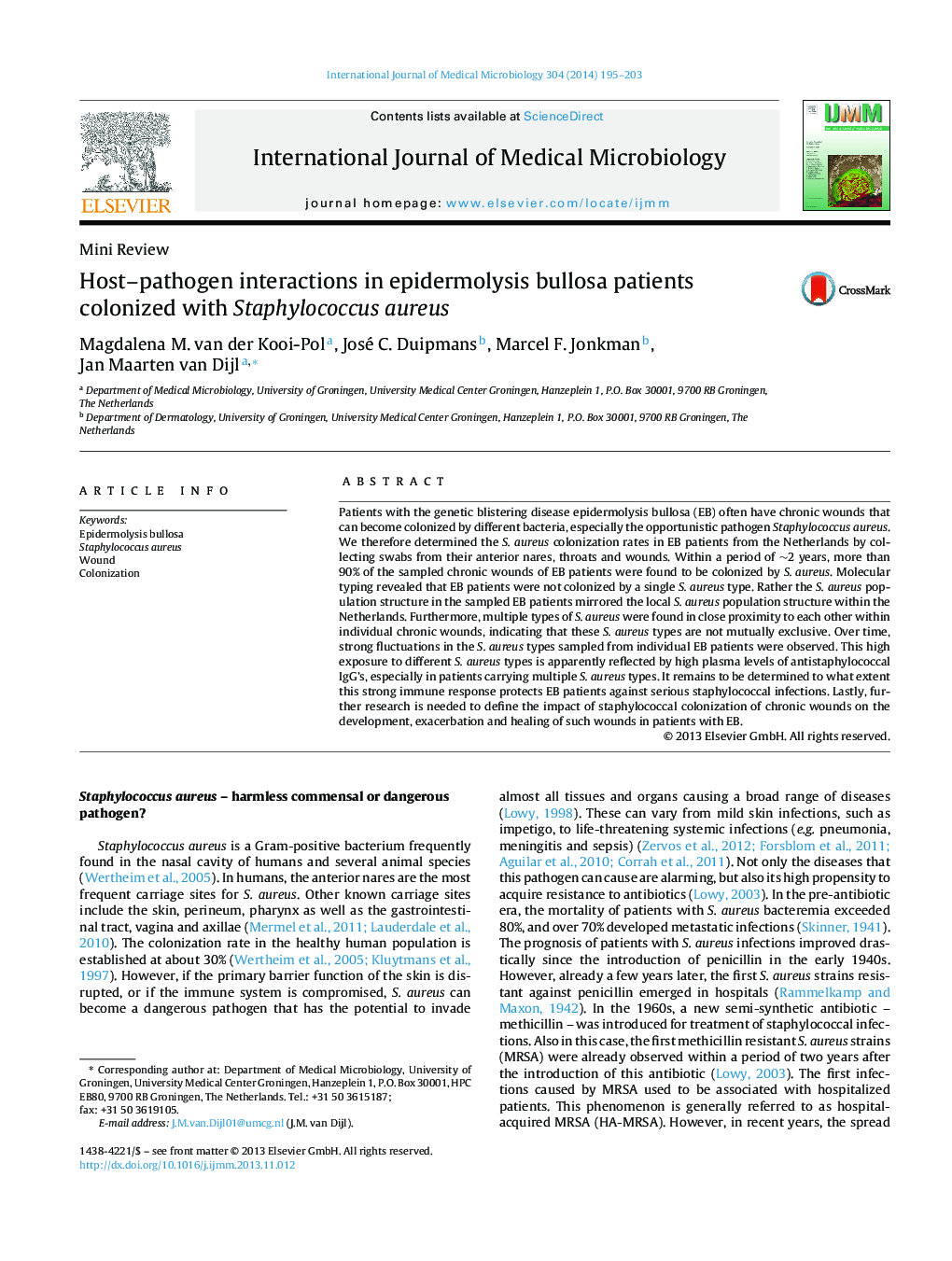| کد مقاله | کد نشریه | سال انتشار | مقاله انگلیسی | نسخه تمام متن |
|---|---|---|---|---|
| 2054826 | 1543696 | 2014 | 9 صفحه PDF | دانلود رایگان |

Patients with the genetic blistering disease epidermolysis bullosa (EB) often have chronic wounds that can become colonized by different bacteria, especially the opportunistic pathogen Staphylococcus aureus. We therefore determined the S. aureus colonization rates in EB patients from the Netherlands by collecting swabs from their anterior nares, throats and wounds. Within a period of ∼2 years, more than 90% of the sampled chronic wounds of EB patients were found to be colonized by S. aureus. Molecular typing revealed that EB patients were not colonized by a single S. aureus type. Rather the S. aureus population structure in the sampled EB patients mirrored the local S. aureus population structure within the Netherlands. Furthermore, multiple types of S. aureus were found in close proximity to each other within individual chronic wounds, indicating that these S. aureus types are not mutually exclusive. Over time, strong fluctuations in the S. aureus types sampled from individual EB patients were observed. This high exposure to different S. aureus types is apparently reflected by high plasma levels of antistaphylococcal IgG's, especially in patients carrying multiple S. aureus types. It remains to be determined to what extent this strong immune response protects EB patients against serious staphylococcal infections. Lastly, further research is needed to define the impact of staphylococcal colonization of chronic wounds on the development, exacerbation and healing of such wounds in patients with EB.
Journal: International Journal of Medical Microbiology - Volume 304, Issue 2, March 2014, Pages 195–203